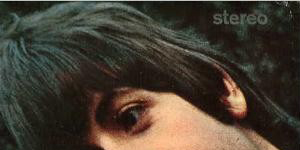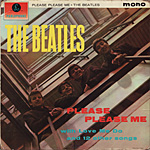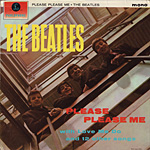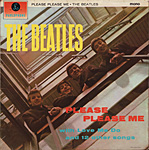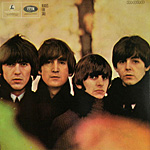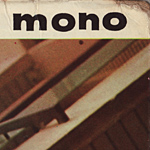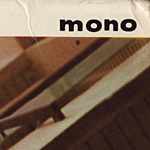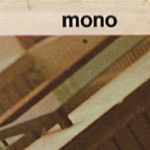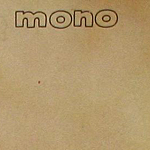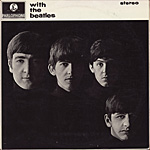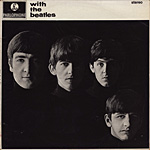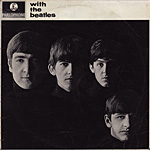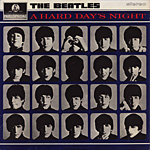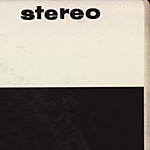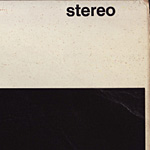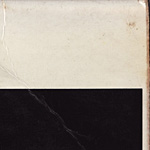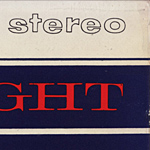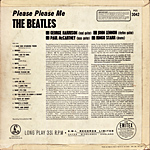
Parlophone Album Cover Style
(Update: 3rd. December 2024)
| COVER: FRONT | COVER: BACK |
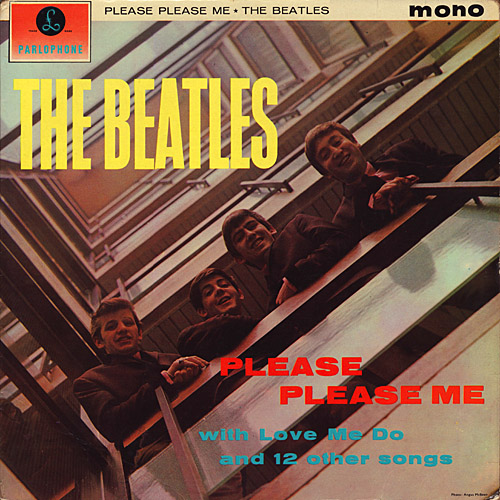 |
 |
Printing Company...Back to the top of the line
| EMI mainly used covers from two
different companies: Ernest
J. Day and Garrod
& Lofthouse. The covers from Garrod & Lofthouse were the most common ones. the early covers from Ernest J.Day were made in a thicker material. The "Gold Parlophone label" release of The Beatles' "Please Please Me" only came in covers from Ernest J.Day. The bottom-right flap on the backs of these "wrap-around cover" LPs almost said who printed the cover. Sometimes a patent number or a phrase "Patents Pending" is seen beside the credit. |
Ernest J. Day & Co. Ltd.
| Printed and Made by Ernest J. Day & Co. Ltd. London |
 |
| Printed and made by Ernest J. Day & Co. Ltd. London |
 |
| Printed and made by Ernest J. Day & Co. Ltd., London |
 |
Garrod & Lofthouse Ltd.
| Printed and made by Garrod & Lofthouse Ltd. Patents pending |
 |
| Printed and made by Garrod
& Lofthouse Ltd. Pattents
pending * The "g" in "Patents pending" text is different typeface. |
 |
| Printed and made by Garrod &
Lofthouse Ltd. Patent number "No. 943,895" was printed. * UK Patent No. 943895: Publication date:11th Dec.1963 |
 |
* Click on the album title, you can find more information.
| Title | Mix | Ernest J. Day | Garrod & Lofthouse |
| Please Please Me (Gold) | MONO | Yes | - |
| STEREO | Yes | - | |
| Please Please Me (Yellow) | MONO | Yes | Yes |
| STEREO | Yes | Yes | |
| With The Beatles | MONO | Yes | Yes |
| STEREO | - | Yes | |
| A Hard Day's Night | MONO | Yes | Yes |
| STEREO | - | Yes | |
| Beatles For Sale | MONO | - | Yes |
| STEREO | - | Yes | |
| Help! | MONO | - | Yes |
| STEREO | - | Yes | |
| Rubber Soul | MONO | Yes | Yes |
| STEREO | Yes | Yes | |
| Revolver | MONO | Yes | Yes |
| STEREO | Yes | Yes | |
| Oldies | MONO | - | Yes |
| STEREO | Yes | Yes | |
| Sgt. Peppers | MONO | - | Yes |
| STEREO | - | Yes |
Cover Style...Back to the top of the line
I. Single Cover
The basic form of the album covers
| i) Wrap-around cover |
ii) Semi wrap-around
cover |
iii) Half
vinyl-coated cover |
iv) Full vinyl-coated cover |
 |
 |
 |
 |
| When you look at the back of the albums from the 1960's, you may notice the three flaps at the top, the bottom and the right. These flaps were glued with paste, wrapping around the cover. | At some point, some albums had a cover with only two outer flaps, at the top and the bottom. | Later, the two flaps were pasted on the inside of the cover, which made them invisible at a glance. In early days, the front side was coated with vinyl (laminated) but the back side wasn't, leaving a border of the coat as a line at the right side of the back cover. | Nowadays, both sides of the cover are coated with thin vinyl film. |
| The Parlophone LPs, and in fact
most EMI-company LPs of the 1960's, had good-quality,
durable covers. Of the nine Beatles' albums on Parlophone,
seven of them came in covers made precisely the same way: The front cover was always laminated, and there were three "fold over" flaps (i.e., extensions of the front cover which were wrapped around the top, bottom and spine, also laminated) which were glued to the back cover. (called "wrap-around cover" or "Flipback cover") The back cover was a separate, flat-finish piece of material. This description applies to the following original LPs:
|
| i) Wrap-around cover | |||
| Straight-cut corner. | Round-cut corner | ||
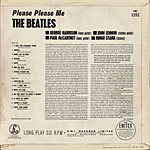 |
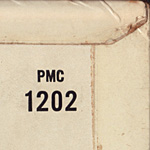 |
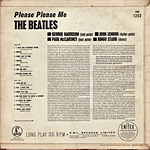 |
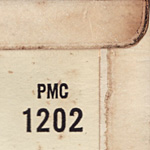 |
| ii) Semi wrap-around (twin-flipback) cover | iii) Half vinyl-coated cover | ||
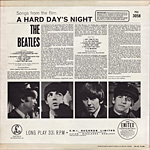 |
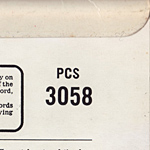 |
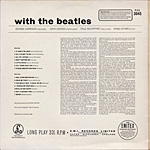 |
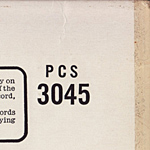 |
II. Gatefold Cover
"Beatles For Sale" and "Sgt. Peppers" are the two exceptions to the way the other seven covers were made, partly because they are gatefold (fold-open) covers, though they are both constructed a bit differently from each other. |
|
| "Beatles For
Sale" doesn't mentions the printers anywhere (whether
Day or Garrod, whether the inside or outside of the
cover). The LP cover is a gatefold, with both front and
back covers laminated, but the entire covers is one whole
piece of material, connected on the inside-right cover by
the laminated fold over flaps. To remove the disk from the cover, you have to open the gatefold and slide the disk out from the left. (Also, this is the only Beatles LP where the record number isn't on the outside of the cover.) |
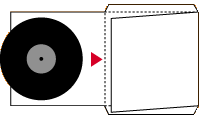 |
| "Sgt. Peppers", similarly, is laminated on both front and back, but is also laminated fully on the inside as well. | |
| The cover was one piece of material, with fold over flaps connecting across the top inside cover. The gatefold has two openings, the left one holding a sheet of Sgt. Peppers cutouts, and the right one holding the LP itself, housed in a custom sleeve. | 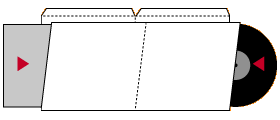 |
| Beatles For Sale | ||||
| FRONT | BACK | INSIDE | INSIDE CLOSE UP | |
 |
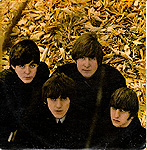 |
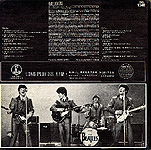 |
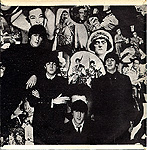 |
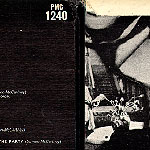 |
| Sgt. Peppers Lonely Hearts Club Band | ||||
| FRONT | BACK | INSIDE | INSIDE CLOSE UP | |
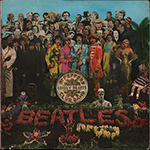 |
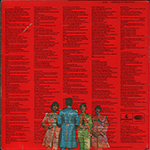 |
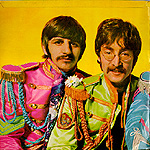 |
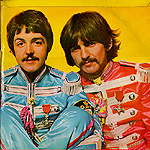 |
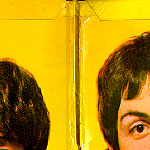 |
Mixing: Mono and Stereo...Back to the top of the line
Manufacturer's Catalog Number
| EMI started to release LPs in 1952 and the first LP in
the PMC series was PMC 1001, probably released in 1955.
LPs were released in both 10 inch and 12 inch format until
1960, but after that all LPs were in the 12 inch format. In 1960 Parlophone also started to release stereo LPs. They were released in a separate record number series, the PCS 3000 series. the first series in this series was PCS 3001. the mono and stereo released were issued in separate record number series until early 1966. In 1966, the record number series was restarted at 7001 with mono and stereo releases now having the same record numbers. Only the record number prefixes - still PMC for mono and PCS for stereo - were different, to denote the format. From 1963 - today, regular Beatles' Parlophone and Apple LPs are issued with catalog numbers--"PMC-XXXX" or "PCS-XXXX", where XXXX is a 4-digit number, excepted the "Let It Be Box Type" was numbered "PXS 1". |
| Prefix | Label | Kind |
| PMC | Parlophone, Apple | Mono |
| PCS | Parlophone, Apple | Stereo |
| PXS | Apple | Stereo (Let It Be: Box Type) |
| CPCS P-CPCS |
Parlophone, Apple | Stereo: for export Edition |
| P-PCS (PPCS) |
Parlophone, Odeon | Stereo: for export Edition |
| PCSP | Parlophone, Apple | Compilation Album |
| PCTC | Parlophone | Magical Mystery Tour |
| PHO | Parlophone | Picture Record |
| Nine original Beatles' LPs were issued on the Parlophone
label between 1963 and 1967 which were issued in both mono
and stereo. Four original Beatles' LPs were issued on the Apple label. Since in early 1969, new LPs began being pressed only in stereo, only the first two Beatles' LPs on Apple ("The Beatles" and "Yellow Submarine") were issued in both mono and stereo, even though "Yellow Submarine" itself was not mixed separately for mono as "The Beatles" and the previous LPs were; the mono "Yellow Submarine", unfortunately, was simply a combining of the two stereo channels. |
| Original Parlophone Label | |||
| RELEASE DATE | TITLE | MONO | STEREO |
| March 1963 | Please Please Me | PMC 1202 | PCS 3042 |
| November 1963 | With the Beatles | PMC 1206 | PCS 3045 |
| August 1964 | A Hard Day's Night | PMC 1230 | PCS 3058 |
| December 1964 | Beatles For Sale | PMC 1240 | PCS 3062 |
| August 1965 | Help! | PMC 1255 | PCS 3071 |
| December 1965 | Rubber Soul | PMC 1267 | PCS 3075 |
| August 1966 | Revolver | PMC 7009 | PCS 7009 |
| December 1966 | A Collection of Beatles Oldies | PMC 7016 | PCS 7016 |
| June 1967 | Sgt. Peppers Lonely Hearts Club Band | PMC 7027 | PCS 7027 |
| Original Apple Label | |||
| RELEASE DATE | TITLE | MONO | STEREO |
| November 1968 | The Beatles | PMC 7067-8 | PCS 7067-8 |
| January 1969 | Yellow Submarine | (PMC 7070) | PCS 7070 |
| September 1969 | Abbey Road | No | PCS 7088 |
| May 1970 | Let It Be | No | PCS 7096 |
Mono and Stereo ... Cover Variation ...Back to the top of the line
I. Front Cover
| From "Please Please Me" to "Collection of Beatles Oldies", usually, you can see the word "mono" or "stereo" on upper right of the front cover, excepted the album "Rubber Soul (*)". |
| MONO | STEREO | ||
| FRONT | CLOSE UP | FRONT | CLOSE UP |
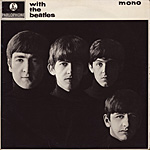 |
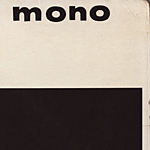 |
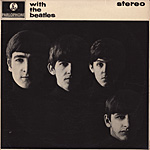 |
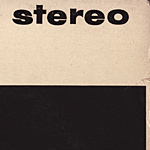 |
| * According to Mr. George
Heon's E-mail, He has a 60's copy of Rubber Soul with the word "Stereo" printed on the front in his collection, and he has since seen another at the 1999 New York Beatlefest. Alan Ould of Good Humour Records says that two types exist: one with the word "stereo" in black letters and one with the word in silver/gray lettering. His copy has the silver/gray letters and the lamination is over top the letters so it has to be genuine. One thought- both copies he has seen have inner sleeves showing EMI records, so they are probably later 60's pressings. (Thanks!) |
|
The Mono/Stereo logo size
| The mono/stereo logo is usually printed at the right upper portion of the front cover. There are some variations in the logo's size: |
* Click on the album title, you can find more information.
| Title | Mix | Large size | middle size | small size | without logo | outline type |
| Please Please Me | MONO | Yes (EJD/G&L) |
Yes (EJD) |
Yes (G&L) |
- | - |
| STEREO | Yes (EJD/G&L) |
Yes (G&L) |
Yes (G&L) |
Yes (G&L) |
- | |
| With The Beatles | MONO | Yes (EJD/G&L) |
- | Yes (G&L) |
Yes? | - |
| STEREO | Yes (EJD/G&L) |
Yes (G&L) |
Yes (G&L) |
Yes (G&L) |
- | |
| A Hard Day's Night | MONO | - | Yes (EJD/G&L) |
Yes (G&L) |
- | - |
| STEREO | - | Yes (G&L) |
Yes (G&L) |
Yes (G&L) |
Yes (G&L) |
|
| Beatles For Sale | MONO | - | - | - | - | Yes (G&L) |
| STEREO | - | - | - | - | Yes (G&L) |
|
| Help! | MONO | - | - | - | Yes (G&L) |
Yes (G&L) |
| STEREO | - | - | Yes (G&L) |
Yes (G&L) |
Yes (G&L) |
|
| Rubber Soul | MONO | - | - | - | Yes (EJD/G&L) |
- |
| STEREO | - | - | Yes (Black or Silver) (G&L) |
Yes (EJD/G&L) |
- | |
| Revolver | MONO | - | - | Yes (EJD/G&L) |
- | - |
| STEREO | - | - | Yes (EJD/G&L) |
Yes (G&L) |
- | |
| Oldies | MONO | - | - | Yes (G&L) |
- | - |
| STEREO | - | - | Yes (EJD/G&L) |
Yes (G&L) |
- | |
| Sgt. Peppers | MONO | - | - | - | Yes (G&L) |
- |
| STEREO | - | - | - | Yes (G&L) |
- |
II. Back Cover
| Please Please Me (PMC 1202) | Please Please Me (PCS 3042) |
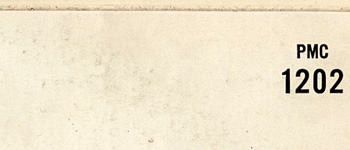 |
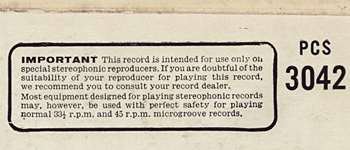 |
| Beatles For Sale (PMC 1240) | Beatles For Sale (PCS 3062) |
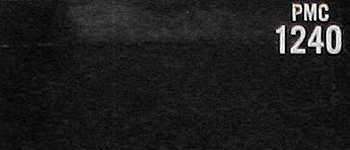 |
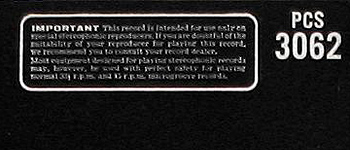 |
| Revolver (PMC 7009) | Revolver (PCS 7009) |
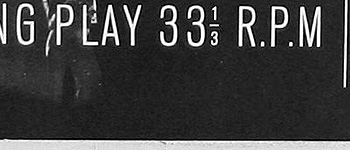 |
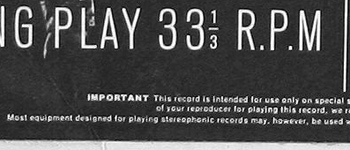 |
EMITEX ad
| The back cover includes an ad for "Emitex" record
cleaner. This clorth has a special rayon plush pile surface which deep cleans between the grooves. Produced in U.K. for EMI Tape Ltd., A Member of the EMI Group. The use of EMITEX provides an effective means of ensuring groove cleanliness so essential to good reproduction. Its regular use will lengthen the life of the record and reduce the static change. Available from Record Dealers. From August until December in 1964, Changed the words "USE NEW EMITEX" instead of "USE EMITEX". cf. U.K. single: company sleeve |
| USE EMITEX CLEANING MATERIAL | USE NEW EMITEX RECORD CLEANER | ||
| Please Please Me (March 1963) | A Hard Day's Night (August 1964) | Beatles For Sale (December 1964) |
Help! (August 1965) |
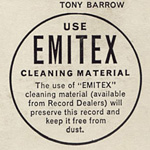 |
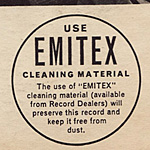 |
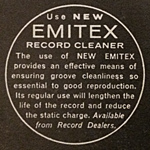 |
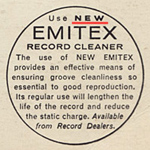 |
| EMITEX Package | |
| FRONT | BACK |
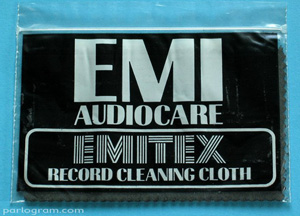 |
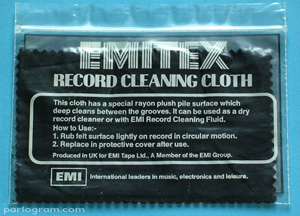 |
| Cloth | |
| FRONT | BACK |
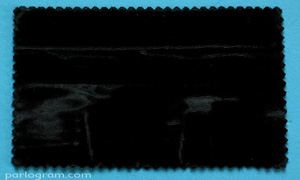 |
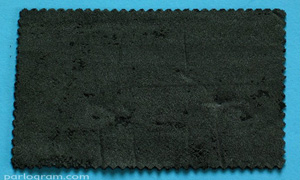 |


